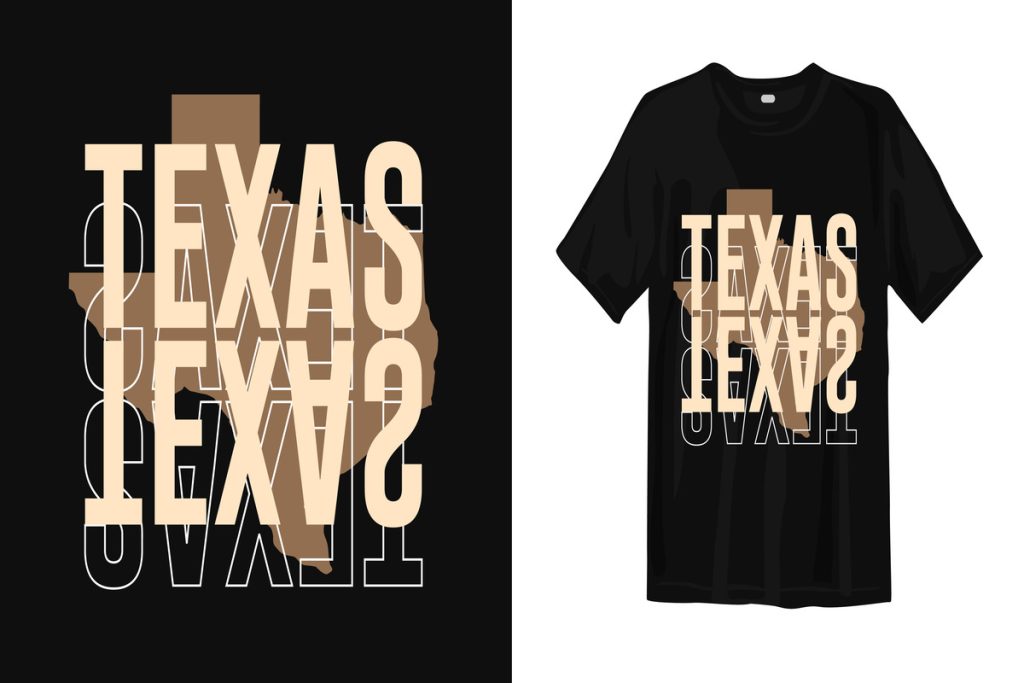In the fast-paced realm of modern printing, UV DTF (UV Direct to Film) printing stands out as a cutting-edge technique that merges efficiency with unparalleled print quality. Ideal for beginners, exploring this innovative technology can unlock tremendous potential for your creative projects. From discovering the best UV printing equipment to understanding essential UV DTF tips for beginners, mastering the basics can significantly enhance your printing results. This guide provides practical insights into how to use UV DTF printing while shedding light on the necessary materials and the vital process of caring for UV DTF prints. Whether you’re a hobbyist or aiming to elevate your business, embracing UV DTF printing will undoubtedly transform your approach to print production.
Also known as Direct to Film UV printing, this method utilizes ultraviolet light to cure ink on a specialized transfer film, allowing for vibrant and durable prints on a variety of surfaces. For newcomers to this printing style, the intricacies of setting up and operating UV DTF printers may seem overwhelming at first. However, with the right knowledge on selecting UV DTF printing materials and understanding post-print care, anyone can successfully navigate their printing endeavors. In this exploration, we will delve into alternative terminologies and processes related to UV DTF printing, showcasing its versatility and the variety of applications it offers. Get ready to embark on an impressive journey into the world of high-quality prints!
Understanding UV DTF Printing Technology
UV DTF (Direct to Film) printing is a cutting-edge technology that melds the principles of UV printing with a transfer film method. Essentially, this technique involves printing high-quality designs onto a special film using ultraviolet light to cure the ink instantly as it is applied. The immediate curing allows for vibrant colors and sharp details, making it an excellent choice for printing on various surfaces like textiles, plastics, and metal. As this technology continues to evolve, its applications are broadening, offering print service providers a competitive edge in meeting diverse customer needs.
For beginners, grasping the fundamentals of UV DTF printing is crucial. Understanding the necessary equipment, such as the right UV printer, and how each component interacts is key to achieving desirable outcomes. Moreover, getting familiar with the mechanics of the curing process, the required inks, and the types of films and substrates will set the groundwork for your success in this arena.
Essential UV DTF Printing Equipment
Choosing the right UV printing equipment is paramount for any beginner looking to explore UV DTF printing. The market offers a plethora of options, but selecting printers that are reliable and user-friendly can significantly reduce the learning curve. Brands such as Mimaki and Epson provide various models tailored for different budgets and printing needs. Furthermore, investing in additional equipment such as heat presses, which are essential for transferring designs onto substrates, cannot be overlooked.
Consider factors like print size and features when making your selection. Higher-end models typically come equipped with advanced features that enhance print quality and efficiency. It’s also wise to read user reviews to learn from the experiences of others—this can guide you towards making informed purchases that will aid in your UV DTF printing endeavors.
Selecting the Right Materials for UV DTF Printing
A critical aspect of achieving excellent results in UV DTF printing lies in the choice of materials. High-quality transfer films, notably PET (Polyethylene Terephthalate), offer the best compatibility with UV inks and ensure sharp and vibrant prints. When selecting your transfer film, ensure it is specifically designed for UV DTF printing; this choice can drastically influence adhesive properties and overall quality. Additionally, knowing the substrates you intend to print on, such as cotton, polyester, or other synthetic materials, is crucial in avoiding compatibility issues.
It’s important to conduct tests on various materials to discover which combination provides optimal results. UV DTF printing is versatile, allowing for experimentation across different surfaces. By understanding the dynamics between your chosen film and substrate, you can elevate the quality of your prints significantly.
Getting Acquainted with Printer Settings
One of the keys to mastering UV DTF printing is understanding your printer’s settings. DPI (dots per inch) plays a significant role in determining print quality, affecting the resolution and clarity of designs. For intricate and detailed images, utilizing a higher DPI setting ensures that details remain vibrant and well-defined. Additionally, adjusting your color profiles to match your substrate will help prevent unwanted color shifts that could detract from the final print quality.
Getting familiar with printer settings can initially be daunting but is essential for producing high-quality prints. Take the time to experiment and document the settings that yield the best results for different types of prints, substrates, and designs. Over time, this knowledge will help you refine your printing technique and enhance overall output.
Caring for Your UV DTF Prints
Once your UV DTF prints are complete, proper care is essential to maintain their vibrancy and longevity. It’s critical to allow your printed items adequate time to cure, typically ranging from 24 to 48 hours. This pause before exposure to washing or heavy usage ensures that the ink has bonded properly with the substrate, ultimately prolonging the lifespan of the print.
Additionally, after the curing process, handling your prints with care is vital. Avoid excessive bending or stretching, which can compromise print integrity. When it comes to washing printed textiles, always follow specific care instructions—this might include cold washes and air drying—to preserve color vibrancy and prevent premature deterioration.
Connecting with the UV DTF Printing Community
Engaging with the UV DTF printing community can be an invaluable resource for beginners and seasoned professionals alike. Online forums and social media groups are teeming with individuals who share insights, tips, and troubleshooting advice. By connecting with others in this niche, you can learn from their experiences, explore innovative techniques, and keep abreast of industry trends.
Participating in community discussions not only increases your knowledge but also opens the door to networking opportunities that can be beneficial for your printing business. Whether it’s sharing your latest projects or seeking feedback, engaging with others will enrich your journey in the UV DTF printing realm.
Frequently Asked Questions
What are some essential UV DTF tips for beginners?
Beginners in UV DTF printing should start by investing in good quality equipment, such as reliable UV printers and heat presses. It’s crucial to select the right transfer films and materials compatible with your printer. Understanding printer settings for DPI and color profiles will enhance print quality. Moreover, using high-quality inks formulated for UV DTF printing will ensure vibrant and durable prints.
How do I use UV DTF printing to achieve the best results?
To use UV DTF printing effectively, begin by setting up your printer with the right parameters, including DPI and color profiles specific to your materials. Test your prints on various substrates to ensure color accuracy and adhesion. Follow proper curing processes as outlined by your equipment manufacturer, allowing sufficient time for prints to cure and setting before they are handled or washed.
What types of UV DTF printing materials should I use?
For UV DTF printing, it’s vital to choose high-quality transfer films, such as PET (Polyethylene Terephthalate), designed specifically for this type of printing. Additionally, consider the substrates you’re working with, like cotton or synthetic blends, as they must be compatible with the UV inks for optimal print quality.
What is the best UV printing equipment for beginners?
Beginners should seek out well-reviewed UV printers from reputable brands like Mimaki or Epson. It’s important to consider features relevant to your printing needs, such as print size compatibility and user-friendly interfaces. Additionally, investing in quality heat presses is essential for effectively transferring prints onto substrates.
How should I care for UV DTF prints to ensure their longevity?
To care for UV DTF prints, allow prints to cure for 24-48 hours after transfer to ensure a strong bond between the ink and substrate. Avoid washing printed items immediately, and consider hand washing in cold water if necessary. Always store prints away from direct sunlight to prevent fading over time.
What should I know about the curing process in UV DTF printing?
In UV DTF printing, the curing process is crucial as it ensures the ink adheres properly and remains durable. Ensure that your UV light is correctly calibrated, with specific distances and times set according to the manufacturer’s guidelines. Under-curing can lead to scratches on prints, while over-curing may make the prints too brittle.
| Key Point | Description |
|---|---|
| What is UV DTF Printing? | A printing method utilizing UV light to cure ink on special film for transferring onto various substrates. |
| Choosing Equipment | Invest in reliable UV printers and essential accessories for effective printing. |
| Selecting Material | Use transfer films like PET designed for UV DTF printing to enhance quality. |
| Printer Settings | Adjust DPI settings and familiarize with color profiles for optimal prints. |
| Quality Inks | Opt for high-quality UV inks that are formulated for DTF printing. |
| Curing Process | Ensure proper curing times and distances from the UV light to enhance durability. |
| Testing Prints | Conduct test prints to assess quality before larger production runs. |
| Post-Printing Care | Allow prints to cure for 24-48 hours for a proper bond with substrates. |
| Regular Maintenance | Perform maintenance on the printer to ensure consistent quality output. |
| Community Engagement | Connect with online communities for tips and troubleshooting advice. |
Summary
UV DTF printing has revolutionized the printing landscape by providing a vibrant and efficient option for transferring designs onto various substrates. As a beginner, mastering this technique will allow you to create stunning prints while avoiding common pitfalls. By focusing on essential factors such as equipment selection, material compatibility, ink quality, and proper curing methods, you can create high-quality products that stand out in the market. Remember, continuous learning and community interaction can enhance your skills, setting you on the path to success in the UV DTF printing world.



